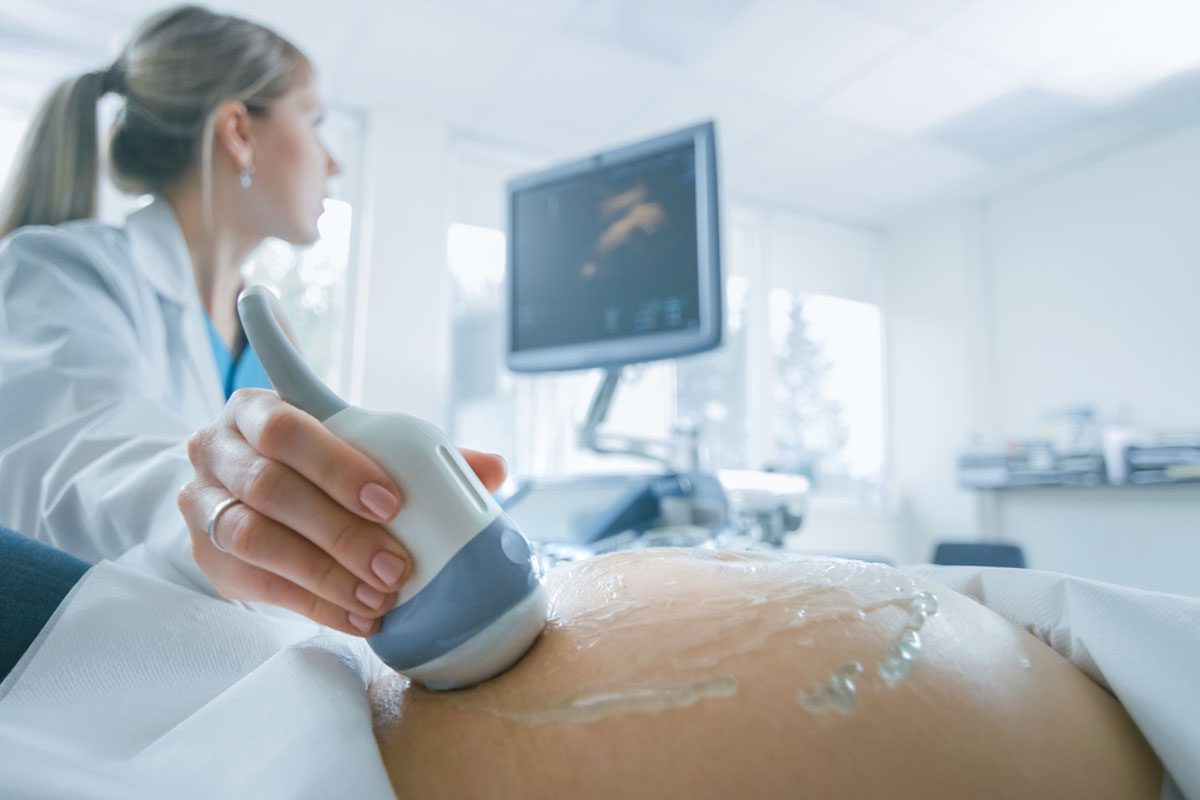Because this piece does not have an abstract, we have provided for your benefit the first 3 sentences of the full text.
To the Editor: Obsessive-compulsive disorder (OCD) onset and exacerbations are common during pregnancy. We report a case of OCD with perinatal onset during the second trimester of 2 pregnancies with complete resolution of symptoms in the postpartum period.
Case report. A 20-year-old woman (gravida 3, para 2) with a history of major depressive disorder, recurrent, and premenstrual dysphoric disorder experienced intrusive ego-dystonic thoughts of cleanliness, order, and the need to count and recount items, with predominant cleaning rituals, with onset during the early stages of the second trimester of her third pregnancy.
A Case of Recurrent Antenatal-Onset Obsessive-Compulsive Disorder With Complete Postpartum Remission
To the Editor: Obsessive-compulsive disorder (OCD) onset and exacerbations are common during pregnancy. We report a case of OCD with perinatal onset during the second trimester of 2 pregnancies with complete resolution of symptoms in the postpartum period.
Case report. A 20-year-old woman (gravida 3, para 2) with a history of major depressive disorder, recurrent, and premenstrual dysphoric disorder experienced intrusive ego-dystonic thoughts of cleanliness, order, and the need to count and recount items, with predominant cleaning rituals, with onset during the early stages of the second trimester of her third pregnancy. She reported experiencing obsessions of uncleanliness and would spend up to 10 hours per day cleaning. She would perform a showering ritual of around 90 minutes’ duration every day and would compulsively wash her hands 20-30 times per day. The compulsions relieved the anxiety triggered by obsessions. Even though she considered the obsessions and compulsions excessive, she could not curtail the frequency.
She met DSM-5 criteria for OCD considering the frequency and intensity of the obsessions and compulsions. Her symptoms of depression included low mood, anhedonia, poor energy levels, sleep disturbance, and thoughts of self-harm. There was no evidence of pathological guilt.
She was started on 10 mg/d of escitalopram during the second trimester. She also received cognitive-behavioral therapy for OCD and depression. With this regimen, all of her depressive symptoms except fatigue improved, but the treatments were only mildly effective for her OCD. Her OCD symptoms improved during the last month of pregnancy, disappeared completely after delivery, and were absent 3 months after delivery.
She was first pregnant at the age of 18 years and experienced similar obsessions and related compulsions about cleanliness, which vanished completely following delivery. She suffered a miscarriage during the first trimester of her second pregnancy and experienced no OCD symptoms during that time. She experienced premenstrual dysphoric disorder in the past. There was no evidence of restless legs syndrome or iron deficiency during her pregnancies.
Around 3.7%-5.7% of all new cases of OCD have onset related to pregnancy.1 Up to 45% of these patients have onset during the first trimester; 50%, during the second trimester; and another 5%, during the third trimester.2 Exacerbations are common throughout pregnancies and the postpartum period for those with preexisting OCD.1,3 A meta-analysis of OCD prevalence across the perinatal period revealed a prevalence of 1.08% in the general population, but the prevalence rose to 2.07% during pregnancy and to 2.43% postpartum.4
The precise etiology of OCD exacerbation and remission at postpartum is not clear, and female reproductive hormones are thought to play an important role. Estrogen and progesterone levels gradually rise during pregnancy and return to baseline in the postpartum period.5 Estrogen increases dopamine release in the caudate-putamen and nucleus accumbens and alters the binding of dopamine in the striatum.6 Estrogen can also change postsynaptic receptor affinity of serotonin receptors and increase their density.5 The diminishing estrogen and progesterone levels shortly after pregnancy perhaps led to complete remission of OCD in our patient.
The frequency of complete remission for OCD onset during pregnancy is not known. A case report7 describes a patient with OCD onset during pregnancy with complete remission after delivery and no other OCD symptoms at a 5-year follow-up. Our case is unique in that the patient experienced an onset of OCD during the second trimester with complete remission postdelivery in 2 of her term pregnancies. She also had a first-trimester miscarriage and experienced no OCD symptoms during her second of 3 pregnancies. Our literature searches on recurrent postpartum OCD remission in pregnancy-onset OCD revealed no reports. There is 1 published case report of OCD onset during the second trimester of a first pregnancy and remission at a later date, followed by a recurrence in the first trimester of the second pregnancy.8 Unlike the case we are reporting, that patient had a postpartum OCD exacerbation.8
We suspect that there might be a subset of patients who experience recurrent OCD onset with pregnancy, who may not follow the classical course and will have full remission, and who thereby do not require longer-term postpartum interventions. Additional reports and controlled studies are recommended to confirm this phenomenon.
References
1. Guglielmi V, Vulink NC, Denys D, et al. Obsessive-compulsive disorder and female reproductive cycle events: results from the OCD and reproduction collaborative study. Depress Anxiety. 2014;31(12):979-987. PubMed doi:10.1002/da.22234
2. Kaya V, Uguz F, Sahingoz M, et al. Pregnancy-onset obsessive compulsive disorder: clinical features, comorbidity, and associated factors. Bulletin of Clinical Psychopharmacology. 2015;25(3):248-258.
3. Uguz F, Gezginc K, Zeytinci IE, et al. Obsessive-compulsive disorder in pregnant women during the third trimester of pregnancy. Compr Psychiatry. 2007;48(5):441-445. PubMed doi:10.1016/j.comppsych.2007.05.001
4. Russell EJ, Fawcett JM, Mazmanian D. Risk of obsessive-compulsive disorder in pregnant and postpartum women: a meta-analysis. J Clin Psychiatry. 2013;74(4):377-385. PubMed doi:10.4088/JCP.12r07917
5. Cunningham GF, Leveno KJ, Bloom SL, et al. Williams Obstetrics. 23rd ed. New York, NY: McGraw-Hill, Medical; 2010:67-68.
6. Vulink NC, Denys D, Bus L, et al. Female hormones affect symptom severity in obsessive-compulsive disorder. Int Clin Psychopharmacol. 2006;21(3):171-175. PubMed doi:10.1097/01.yic.0000199454.62423.99
7. Iancu I, Lepkifker E, Dannon P, et al. Obsessive-compulsive disorder limited to pregnancy. Psychother Psychosom. 1995;64(2):109-112. PubMed doi:10.1159/000288999
8. Hertzberg T, Leo RJ, Kim KY. Recurrent obsessive-compulsive disorder associated with pregnancy and childbirth. Psychosomatics. 1997;38(4):386-388. PubMed doi:10.1016/S0033-3182(97)71446-4
aCreighton University School of Medicine, Omaha, Nebraska
bCurrent affiliation: Department of Pediatrics, Children’s Hospital of Philadelphia, Philadelphia, Pennsylvania
cDepartment of Psychiatry, Creighton University, Omaha, Nebraska
Potential conflicts of interest: None.
Funding/support: None.
Informed consent: Consent was obtained from the patient to publish this case report.
Published online: March 30, 2017.
Prim Care Companion CNS Disord 2017;19(2):16l01989
https://doi.org/10.4088/PCC.16l01989
© Copyright 2017 Physicians Postgraduate Press, Inc.
Please sign in or purchase this PDF for $40.00.
Save
Cite



